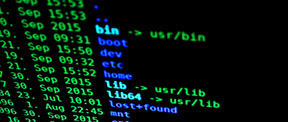**Unveiling the Secrets of the locate Command**
In the vast and ever-evolving world of Linux commands, locate often remains an underappreciated gem. Despite its simplicity, it packs a powerful punch that can significantly enhance your workflow. While it’s commonly known for locating files, its versatility extends far beyond that.
**What is locate?**
locate is a lightning-fast utility that searches for files and directories based on their names. It maintains an updated database of files on the system, making it incredibly efficient compared to commands like find or grep.
**Example Uses Beyond Tree:**
While locate’s ability to find files is well-known, here are some additional use cases that demonstrate its versatility:
* **Listing files with specific extensions:**
“`
locate *.txt
“`
* **Finding files created or modified within a specific time frame:**
“`
locate -c mtime -7
“`
* **Searching for files containing a specific pattern:**
“`
locate -i “*pattern*”
“`
* **Retrieving information about files:**
“`
locate -l /bin/bash
“`
* **Identifying potential security risks:**
“`
locate -e uid=0
“`
**Tips for Effective Usage:**
* **Update the database regularly:** Running `updatedb` command keeps the locate database up-to-date.
* **Use wildcards wisely:** Asterisk (*) and question mark (?) can help expand your search criteria.
* **Explore options:** The locate command offers a wide range of options for customization.
* **Combine with other commands:** Locate can be used in conjunction with other commands like xargs or grep.
**Conclusion:**
locate is an indispensable tool for quickly and efficiently searching for files on Linux systems. Its versatility extends beyond finding files to retrieving file information and identifying potential security risks. By leveraging the examples and tips provided in this blog post, you can effectively harness the power of locate to streamline your workflow.
